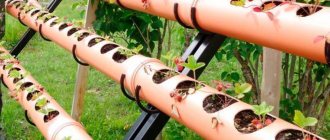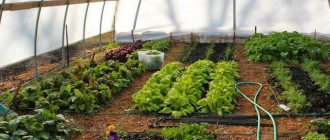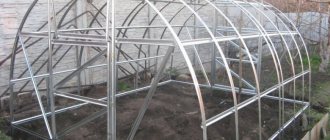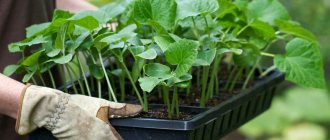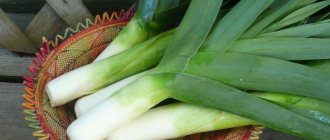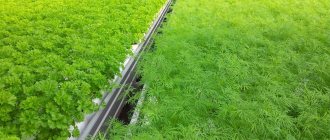The essence of hydroponics comes down to the fact that not ordinary soil, but a special nutrient solution is used to grow plants. The latter contains the optimal amount of nutrients necessary for crop growth. This technology is gaining popularity among people growing plants both at home and in greenhouses. This method is considered the most optimal for the growth and development of various crops.
Prospects for hydroponic growing
The area of land suitable for growing fruits and vegetables is systematically decreasing against the backdrop of urban and population growth. Such diverse vectors of planetary development require the introduction of technologies that can ensure a continuous supply of food. One solution to this problem is hydroponic cultivation.
This technology allows you to grow natural plants in a limited area. This is achieved due to the fact that in greenhouses that use hydroponics, plantings with crops can be placed vertically on special structures, which are often called vertical farms. In addition, this technology has the following characteristics:
- reduces water consumption;
- reduces labor costs when growing plants (in particular, crops are “watered” by automation);
- allows you to grow plants in different conditions (on roofs, in rooms, in separate rooms, and so on);
- does not harm plants and does not have a negative effect on the human body.
Hydroponic installations allow minimizing human involvement in growing plants. These devices have the function of automatically supplying the optimal amount of water required for a particular crop.
In hydroponic greenhouses, special lamps of varying power are installed. Therefore, when arranging such growing areas, you can do without windows and natural sunlight.
Hydroponic greenhouses create optimal conditions for the growth and development of plants. Thanks to this, by growing certain crops you can get up to 10 harvests per year.
Hydroponics also opens up new opportunities for experimentation. That is, this technology makes it possible to make changes in the methods of growing plants, thereby increasing the yield of the latter. At the same time, it is possible to evaluate the effectiveness of experiments carried out in hydroponic greenhouses faster than in other conditions.
Nutrient solutions
Preparing the solution is not difficult; for these purposes it is recommended to use filtered or settled water. Fertilizers are applied only after equalizing the pH of the water; after introducing each substance, the solution must be thoroughly mixed.
Each stage of plant development must correspond to a certain level of electrical conductivity, which also needs to be measured. The finished mixture must be stored in a dark place.
Recently, the need to prepare the solution yourself has disappeared, since there is a wide variety of complex mixtures.
Microelements are added to the solution in the form of chelates or sulfates, the former are organic molecules of artificial origin, their function is to retain important microelements.
Fertilizers are characterized by a more complete composition, in contrast to soil fertilizers, when creating which it is impossible to calculate the exact amount of useful substances, since the plant receives many of them from the ground.
The use of hydroponic nutrient solutions when fertilizing crops growing in the ground also helps to increase yields . To calculate the concentration of solutions, a special table and calculator are used.
Which plants are suitable for hydroponic growing?
Due to the fact that this technology is constantly developing, the list of plants suitable for hydroponic cultivation in greenhouses is regularly increasing. Currently, the crops in demand on the market include the following:
- celery, bell peppers, tomatoes and cucumbers;
- lemons;
- parsley, onion, lettuce and basil;
- strawberries, wild strawberries and honeysuckle;
- sage and other medicinal herbs;
- green food for animals.
In America, bananas were grown hydroponically in 2018.
In the Netherlands, it is actively used in growing flowers (mainly tulips). In Japan, experiments were carried out with melon. The harvest of melons using hydroponics was even greater than when grown under natural conditions. When choosing plants, it is necessary to take into account that crops have different requirements for:
- temperature conditions;
- humidity level;
- nature of lighting.
If the last parameter can be changed by installing different lamps, then it is difficult to maintain different temperatures and humidity levels in one greenhouse.
Analysis of industry development rates
The market is a complex system in which many players operate and compete, trying to attract the maximum share of the consumer segment. During the analysis, it is important to understand how the company whose activities we describe in terms of a company for greenhouse cultivation of strawberries and vegetables will stand out in this system of commercial relations:
- effective technologies that reduce resource and rental costs;
- quality all year round, regardless of soil conditions;
- large harvest volumes;
- reasonable prices;
- convenient location of the complex.
Another good direction for greenhouse farming is growing onions and herbs, which are in demand all year round. The business plan for growing herbs and green onions contains all the necessary information for the successful launch of this area.
Features of growing greens in hydroponic greenhouses
Growing greens in greenhouses is very popular, partly because such plants are capable of producing multiple harvests in one year. However, these crops also have certain requirements for the place of growth:
- a constant supply of nutrients and oxygen to the roots is necessary;
- the room with plants needs periodic supply of fresh air;
- It is necessary to ensure uniform flow and removal of water.
In a hydroponic greenhouse, these functions are performed by electric pumps, which automate the process of growing greens. This growing method provides optimal conditions for crop growth.
In addition, when growing greens, it is important to install lamps that shine continuously for 12-14 hours.
DIY hydroponic system
DIY hydroponic greenhouses are becoming increasingly popular among gardeners.
Stages of manufacturing such a system:
- Cut out a space in the bucket lid to accommodate the pot.
- Make 2 more holes in the bottom for the solution.
- Attach the pump tube to one hole, and attach the overflow tube to the second, which is necessary to adjust the solution in the container; it should be located 3-4 cm below the edge of the container.
Before using the installation, testing is required, during which it is checked that there are no problems with the flow and removal of water from the pot. After checking, the bucket must be filled with solution and the plant must be planted in it.
The timer should be set to a fifteen-minute mode, during which the solution should flow into the pot, and drain back for forty-five minutes. Illuminating plants in the dark will help speed up growth; ultraviolet lamps are used for this purpose; a timer allows you to turn them on for 10-15 minutes. at night.
What equipment is needed
Hydroponic greenhouses, used for growing on an industrial scale, are equipped with professional devices. Moreover, the latter are selected taking into account the type of crop, growth conditions, production volume and other factors.
Hydroponic installations are divided into several types:
- Deep water culture systems.
In such installations, plant roots are constantly in a nutrient solution, which is regularly enriched with oxygen due to a running air compressor. In this type of system, radishes, lettuce and other greens are grown primarily. - Intermittent flooding systems
. The operation of this installation is fully automated. Water is supplied to the roots according to a timer. Part of the unabsorbed liquid is drained back into the reservoir with the solution. This type of installation is suitable for growing vegetables. But such a system is dependent on electricity. - Drip irrigation system
. This type of installation also works in automatic mode. The solution is supplied to the roots through connected hoses. - Nutrient layer system
. In installations of this type, plants are placed in special boxes, along the bottom of which a nutrient liquid flows in a thin layer. Nutrition goes directly to the roots. - Aeroponic system
. In such installations, plants hang in the air. The nutrient solution is supplied to the roots by spraying. This type of system provides high yields, but is difficult to install and manage. Additional fault tolerance needs to be taken care of.
More details about such systems are written in the articles: “What is hydroponics?”, “What is aquaponics?”, “What is aeroponics?”. Regardless of the device chosen, water is supplied directly to the root zone, which increases the rate at which plants absorb nutrients.
To organize such greenhouses, you need pots consisting of two containers: an internal one (usually made of plastic) and an external one, into which excess liquid drains.
The substrate is placed in the inner container of the hydropot. This material is chemically neutral, does not have any unnecessary effect on the nutrition and development of plants, but simply holds the roots. Due to its porous structure, the substrate ensures the free passage of air and water to the roots. The plant is planted in this substrate.
Also, a device is often placed in the inner container that monitors the water level. The outer vessel has no holes. This container is made mainly of the same plastic, ceramics, wood, plastic or metal.
What is hydroponics
Any technology has advantages and disadvantages. There are only positive reviews about hydroponics. Let's get acquainted with the features of this growing technology in more detail.
This growing method is based on the use of a liquid nutrient solution instead of regular soil. This allows you to grow crops in a shorter time. Using this method you can grow vegetables and herbs.
A liquid medium allows you to better dissolve substances useful for vegetable growth and with the required concentration. The basis is foam rubber, expanded clay or similar porous material.
The use of hydroponics allows crops to be arranged in several tiers.
Types of hydroponic greenhouses
Conventionally, hydroponic greenhouses are divided into 2 types: for industrial and home cultivation. Both types differ in production volumes and devices used.
Industrial greenhouses
For the industrial production of vegetables or herbs, two types of hydroponic greenhouses are used:
- Multi-tiered. In such greenhouses, structures with five or more floors of shelving arranged in a staircase are installed. This arrangement allows you to grow several crops simultaneously in a limited space. The multi-tier staircase arrangement provides easy access to any rack.
- Container greenhouses. In this case, the territory is divided into several sectors reserved for plants, seed germination, storage of equipment, preparation of solution, and so on.
Depending on production volumes, automatic watering is organized in industrial greenhouses. The first type is more expensive, but reduces labor costs and human participation. The second type of greenhouse is suitable for beginning farmers.
Home greenhouses
At home, you can also organize a hydroponic greenhouse for growing different crops. In this case, both professional systems and DIY installations are used.
To organize a hydroponic greenhouse yourself, you will need:
- Reservoir for solution. A plastic opaque container is used for this. The volume of the tank is calculated based on the requirements of a specific crop.
- Pots with holes in the walls and bottom.
- Substrate.
- Pump.
- PVC fittings and pipes.
- Small diameter plastic pipes.
- Stands for pipes and pots.
The solution reservoir is installed under the structure. Pipes with holes for pots are attached along the racks and connected with hoses for supplying and discharging liquid. A pump is installed in the reservoir with the solution. After installing the pots with the substrate, you can start the hydroponic system.
Financial calculations
Investments in starting a business
The business plan for a hydroponic greenhouse implies the following starting investments in the business (in thousands of rubles):
- registration of an enterprise – 10;
- land rental for the period of preparation for launch – 10;
- purchase and installation of greenhouses, their internal equipment – 150;
- purchase and equipment of an office and warehouse trailer – 100;
- purchase and installation of a hydroponic system – 200;
- purchase of seeds, nutrient substrate, packaging for the first month of work – 20;
- costs of searching for sales channels (printing leaflets, submitting advertisements to local media) – 20;
- reserve – 20.
Total – 530,000 rubles.
Current expenses
The company will spend monthly (in thousands of rubles):
- utility bills – 10;
- purchase of seeds, packaging, consumables – 20;
- staff salary – 100;
- expenses for rental vehicles and other unaccounted expenses – 20.
Total: 150,000 rubles
Product sales channels
Product sales channels are determined depending on the region of residence of the farmer and a number of other conditions. It is recommended to find buyers and conclude contracts with consumers at the design stage.
Vegetables, fruits and herbs can be sold:
- retail stores;
- wholesale buyers;
- sellers at markets;
- cafes and restaurants.
You can also organize your own point for selling crops. Seedlings are bought by summer residents and industrial greenhouses. Flowers can be sold to the appropriate points (shops) or on the market.
Plan of organizational and administrative activities
In order for the launch of the project to go perfectly and not encounter obstacles in the form of bureaucratic, legal or functional barriers, we will prescribe in advance a plan for preparing for the implementation of the plan for opening a hydroponic greenhouse growing strawberries and vegetables :
- Registration of a business in the chosen form of legal entity.
- Concluding an agreement for settlement and cash services with a bank.
- Obtaining an individual taxpayer number.
- Selecting a plot of land for the construction of greenhouse .
- Review of existing hydroponic systems, their pros and cons.
- Assessment of the financial market and attractive sources of investment.
Organizational matters
At the stage of developing a plan for implementing a business for growing plants in a hydropnic greenhouse, it is recommended to resolve organizational issues related to both economic activity and registration of the enterprise.
Registration of business activities
Regardless of where the hydroponic greenhouse is located, if this activity will generate income, the enterprise must be registered in the prescribed manner.
When running such a business, you can organize an individual entrepreneur, K(F)H or LLC. The choice of ownership form is determined based on the objectives and production volumes. This type of activity does not require licensing, which simplifies the registration of an enterprise.
It is recommended to choose a single agricultural tax or simplified tax system as a taxation system. In both cases, you must pay 6% of the profit received. But if the income level exceeds the limits established by law, the taxation system will have to be changed.
In addition, after registering a business, it is necessary to send samples of the grown products to the appropriate laboratory to obtain a conclusion that the plants meet sanitary standards. This document allows you to sell herbs and vegetables in markets and other retail outlets.
Selection and arrangement of the site
When choosing a site, it is recommended to give preference to land that meets the following requirements:
- year-round access is organized;
- The area of the territory allows you to install a greenhouse;
- it is possible to connect to the electrical networks of the required power and water supply (or it is possible to drill a well).
When arranging a site and a translucent greenhouse, it is necessary to take into account that plants need sunlight. Therefore, the greenhouse windows should be located on the side from which the sun moves (usually the south side). It is also necessary to organize protection of the structure from external factors, including strong winds.
What is best to grow using a hydroponic system?
It is recommended to select the type of plants that can be grown using a hydroponic system based on the needs of consumers in a particular region of the country. The following are popular in different regions:
- seedling;
- cucumbers and tomatoes;
- greenery.
During the cold season, you can also grow peppers and radishes in a hydroponic setup. The latter, like greens, is capable of producing several harvests per year.
Recruitment
To organize the operation of a hydroponic greenhouse, the following employees will be required:
- director;
- technologist specializing in growing crops using hydroponics;
- plant breeder;
- equipment master;
- handyman
The number of personnel is also determined depending on the volume and needs of production. A non-disclosure agreement must be entered into with each employee upon hiring.
Raw material suppliers
The seeds of cultivated plants are often used as planting material for a hydroponic greenhouse. When searching for suppliers of these products, it is recommended to give preference to companies that have been on the market for a long time. This approach will ensure a regular supply of seeds and continuous production.
Subtleties of growing seedlings
Hydroponic technology is the most beneficial for growing seedlings - and the yield as a whole depends on its quality.
- You won’t believe it, but in large greenhouse enterprises specializing exclusively in this method, seedling plots occupy no more than 6% of the total area.
- This is a problem because due to lack of space, the seedlings have to be forced to thicken. In such conditions, it becomes too elongated, and its root system is weakened, which is why the harvest, especially the first one, is reduced by at least a couple of kilograms per square meter.
Racks for seedlings
- Therefore, many greenhouse farms are being re-equipped, first of all, increasing the area for seedlings. The departments are equipped with long 35-meter racks with a width of 1.5 m.
- Under them, steel pipes connected to a common heating system are laid, with hot water circulating through them. This allows you to heat the substrate into which the seedlings are planted.
Preventive measures
Seedlings require tireless care and attention, as they can get sick and even die.
Therefore, there are strict requirements for planting seeds:
- The room is disinfected with a 10% formaldehyde solution, or treated with one of the fungicidal preparations. All containers, equipment and substrate are also disinfected.
- People who work in seedling areas are provided with special clothing and footwear.
- When the seedlings gain strength, no transport is allowed into the compartment. People enter from the street through a disinfection mat placed at the entrance.
Shoe disinfection mat
- An important condition is cleanliness in the complex: periodically wash the glass, side and end surfaces with warm water.
Note! All equipment in greenhouses is painted white or silver. This is no coincidence - this way light is reflected better from their surfaces.
How to prepare seeds for planting
It is possible to obtain high-quality seedlings only by using selected seeds. To make this selection, the seeds of radishes, cucumbers, and tomatoes are soaked in a two percent solution of ammonium nitrate. After a few minutes, the bad seeds float to the surface, while the good ones (as the heaviest) settle to the bottom.
- Before planting, the seeds are heated - the technologies are different, depending on the type of crop. In addition, this treatment improves germination and overall plant yield. In addition, to protect against fungus and viruses, the seed material is treated with foundationazole or a TMTD suspension.
Seed protectant TMTD
- Next, the seeds, thoroughly washed after dressing and dried, are treated with active biological substances . Most often they are soaked in solutions of micro- or macroelements. The recipe for such a solution depends on what kind of crop will be grown.
- For cucumbers and tomatoes, make the following cocktail , adding 1 liter of water:
- Superphosphate (simple) – 5 g;
- Nitrate (potassium) – 5 g;
- Manganese sulfate – 100 mg;
- Boric acid – 150 mg;
- Vitriol (copper) – 150 mg;
- Zinc sulfate – 100 mg.
- There are other methods for improving the planting qualities of seeds : soaking in blue, irradiation with ultraviolet light, laser, ultrasound, or simply electric or sunlight.
These methods are good specifically for growing crops in greenhouses, and are sometimes used in combination. They begin to do so after the seed disinfection procedure.
Timing and nuances of sowing
In order to get a harvest of tomatoes and cucumbers by spring, their seeds are sown during the period of lowest temperatures and minimal light.
- For cucumbers, this is the first half of December (4-5 weeks before planting). According to the norm, its seeds are sown at the rate of 2 kg per hectare of plot area.
- Tomato seeds are planted in mid-November - approximately 55 days before permanent planting. For them, the norm is 10 times less - 200 grams per hectare.
Note: Pre-germination of seeds is carried out in a thermostat, where the temperature is maintained within 24-30 degrees. At home, you can use the seed germinator that you see in the photo.
Equipment for germinating seeds at home
The result was excellent seedlings
Growing seedlings in a nutrient solution
Planting seeds in sawdust
- Planting of sprouted seeds is carried out in pre-disinfected boxes. Coarse sand, peat or sawdust are used as filler for them, which must also be disinfected. Resins and tannins also have to be removed from sawdust, so they are washed and boiled for about an hour.
- The bottom layer of the substrate is about 5 or 6 cm. After planting the seeds, they are covered with another, but thin (up to 1 cm) layer, and moistened with a warm (27-28 degrees) nutrient solution.
The recipe for a solution for 100 liters of water is as follows:
- Ammonium nitrate – 20g;
- Potassium nitrate – 60g;
- Superphosphate – 80g;
- Magnesium sulfate – 25g.
- Sowing boxes with seeds are placed in one layer and covered with thin plastic film. When the seeds are well germinated, the cucumber will sprout the next day, and the tomato on the third day.
- If the shoots are late, it means there is something wrong with the microclimate in the greenhouse. Then the film is removed and additional illumination is carried out using lamps. Irradiators are concentrated so as to achieve the required level of illumination even in the absence of natural light.
Additional illumination of seedlings
- Additional illumination is continued until the rows of seedlings close together (about 2 weeks), and then it is done after picking.
- In cucumber, full opening of the cotyledon leaves usually occurs on the fifth day after emergence. For tomatoes, this period extends for two weeks, after which the seedlings are planted (dive) into pots filled with fine crushed stone.
Picked seedlings
- During the dive, for better branching, the tip of the main root is removed. As seedlings grow, they must be culled. Deformed cotyledons, as well as seedlings that hatch later than expected, are removed.
- When the first true leaves appear, underdeveloped plants, as well as those with incorrect arrangement of leaves, are discarded. Seedlings are planted in a permanent place when they have 6 full leaves with a rich green color, plus one internode.
Prevention of seedlings
During the growth of cucumber seedlings, they are sprayed twice with foundationazole for prevention, making a solution in the following concentration:
- For the first time, after the leaf appears - 0.1%.
- The second time, immediately after picking - 0.8%.
Fungicide used to prevent cucumber seedlings
Tomatoes are sprayed with a weak solution of boric acid (0.05%) for the first time, and Bordeaux mixture is used for the second time at a concentration of 0.5%.
Preparation for treating tomato seedlings
Pros and cons of growing hydroponically
The system called hydroponics has both advantages and disadvantages. The advantages of using hydroponics include:
- rapid growth of vegetable crops;
- fruits do not accumulate harmful chemicals, which has a beneficial effect on human health;
- saving space with this type of cultivation;
- if necessary, plants can be transplanted to another location;
- one of the important advantages of the method is that there is no need to use soil, which is especially important in areas with a shortage of fertile land;
- there is no need to water cucumbers and tomatoes frequently.
There are practically no disadvantages to this type of cultivation, but there are negative features:
- expenses on equipment;
- Carrying out frequent monitoring of the temperature regime of plants.
Yield indicators
The growing cycle of tomatoes is about three months, and with the correct composition of the nutrient solution, fruit formation continues for up to ten months. Cultivation at home allows you to get two harvests. New plants are planted one and a half months before old ones are removed, which contributes to uninterrupted yields.
To obtain maximum yield, it is equally important to carry out timely and correct formation of plants in a vertical position. Immediately after replanting into mats or perlite, it is necessary to tighten the wire and use special hooks or clips to support the plants.
For full fruit set, it is recommended to carry out annual artificial pollination of plants, which is especially important when growing vegetables at home.
For full fruit set, it is recommended to carry out annual artificial pollination of plants.
Hydroponics at home: how to plant greens
Using hydroponics, you can grow some crops even on your own windowsill.
There is no need to use soil, which means the house will be clean. As a rule, all kinds of greens are grown in this way: parsley, fennel, green onions, basil and other herbs. Crops that have increased ripening characteristics lend themselves best to cultivation. Common people often use the flow-through method of hydroponics, which has its advantages:
- Saving money (minor waste of solution and electricity).
- Fertilizers are used very efficiently.
- Cultures develop and grow rapidly.
- Environmental friendliness of the resulting products.
In order to prepare a hydroponics kit yourself, just take a container that needs to be filled with a special solution rich in nutrients. Special gutters are inserted into it, which will have slots for cups in which the culture will germinate. You will also need a timer and a water pump.
Feeding tomatoes
A gardener or summer resident can choose fertilizers for tomatoes based on their financial capabilities. The most common mixture containing useful chemicals is perlite, which is also inexpensive. Hard perlite allows you to quickly ventilate and supply the tomato roots with useful microelements. Usually you can plant two tomato sprouts in one container with perlite.
Each seedling should be placed on an area of one square meter. The gardener must choose the right nutrition for tomatoes. When preparing the mixture, it is necessary to measure all useful substances down to the gram. Usually the same ratio of nutrients is used as when feeding cucumbers.
